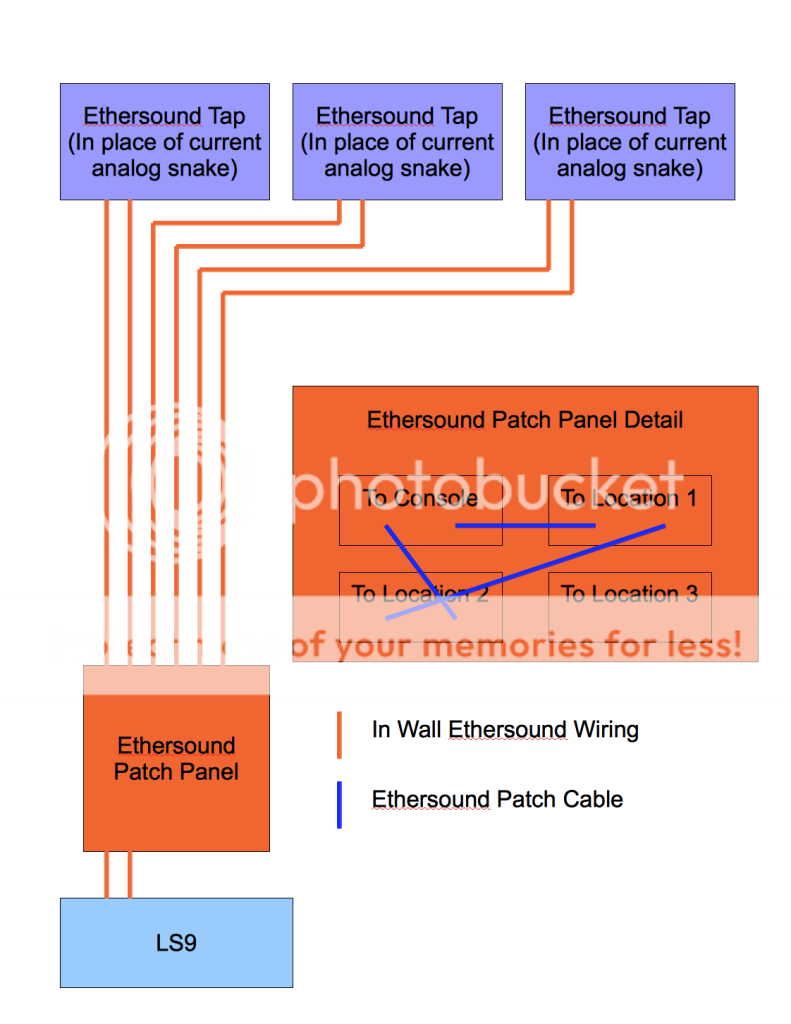zuixro
Active Member
In our upcoming sound upgrade, we are getting a Yamaha LS9-32 (not my first choice, I wanted an M7...) and a yet to be determined number of SB168-ES Stageboxes. There's been a little bit of confusion over how the new system was to be setup. The TD wanted to replace every output of our old analog snake with one of the Stageboxes. (or at least the majority of them) I told him that I didn't think it would work, since you can only have two cards in the LS9, therefore only two Stageboxes. Makes sense right? Well after I started thinking about it, I started to wonder, if you did have 4 Stageboxes on one network, could you use them all and just make sure to not overlap any ports? Or could you (using a computer with their software) patch the different inputs/outputs on the Stageboxes to inputs/outputs on the LS9?
I've done a lot of research, and I haven't been able to figure it out. It's starting to look like Cobranet or Dante would be better suited for our situation, especially since Ethersound has to be linear or cyclical, no star topologies.
I've done a lot of research, and I haven't been able to figure it out. It's starting to look like Cobranet or Dante would be better suited for our situation, especially since Ethersound has to be linear or cyclical, no star topologies.
Last edited:



